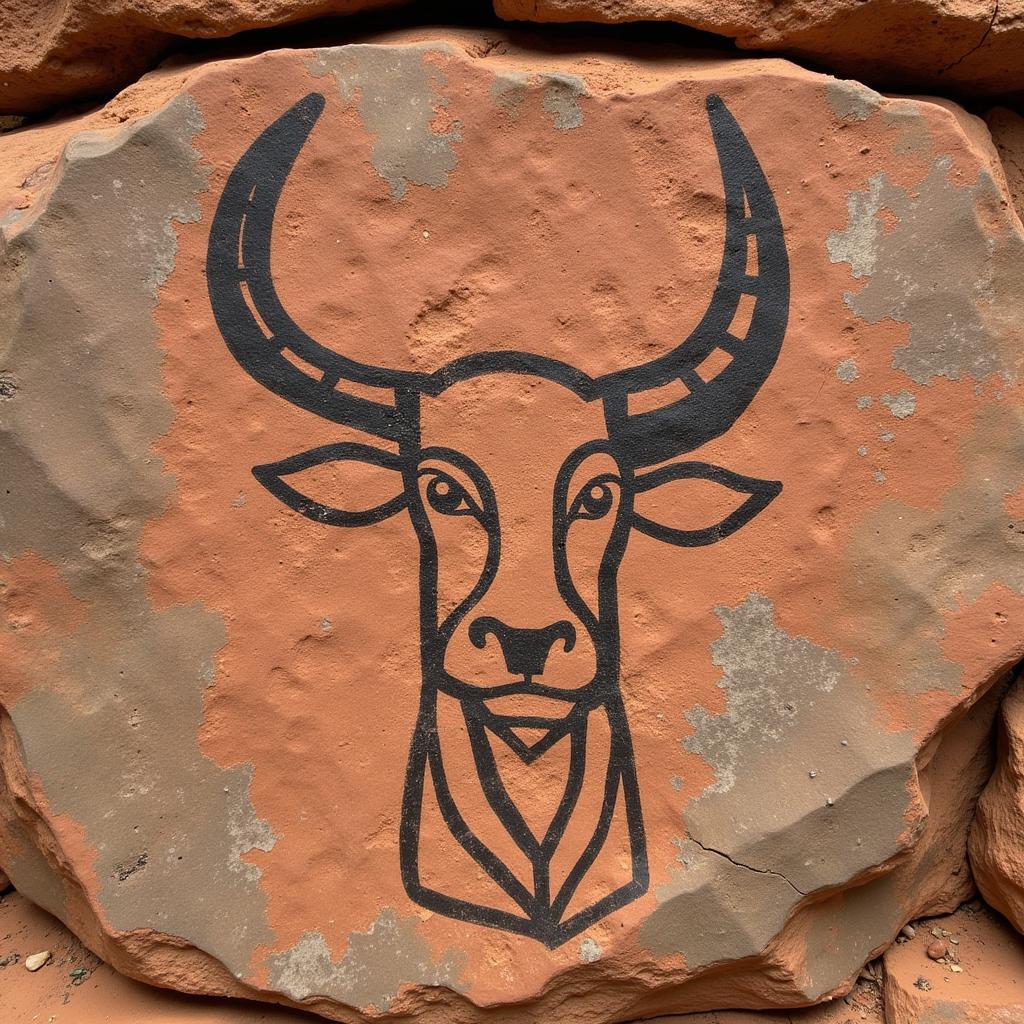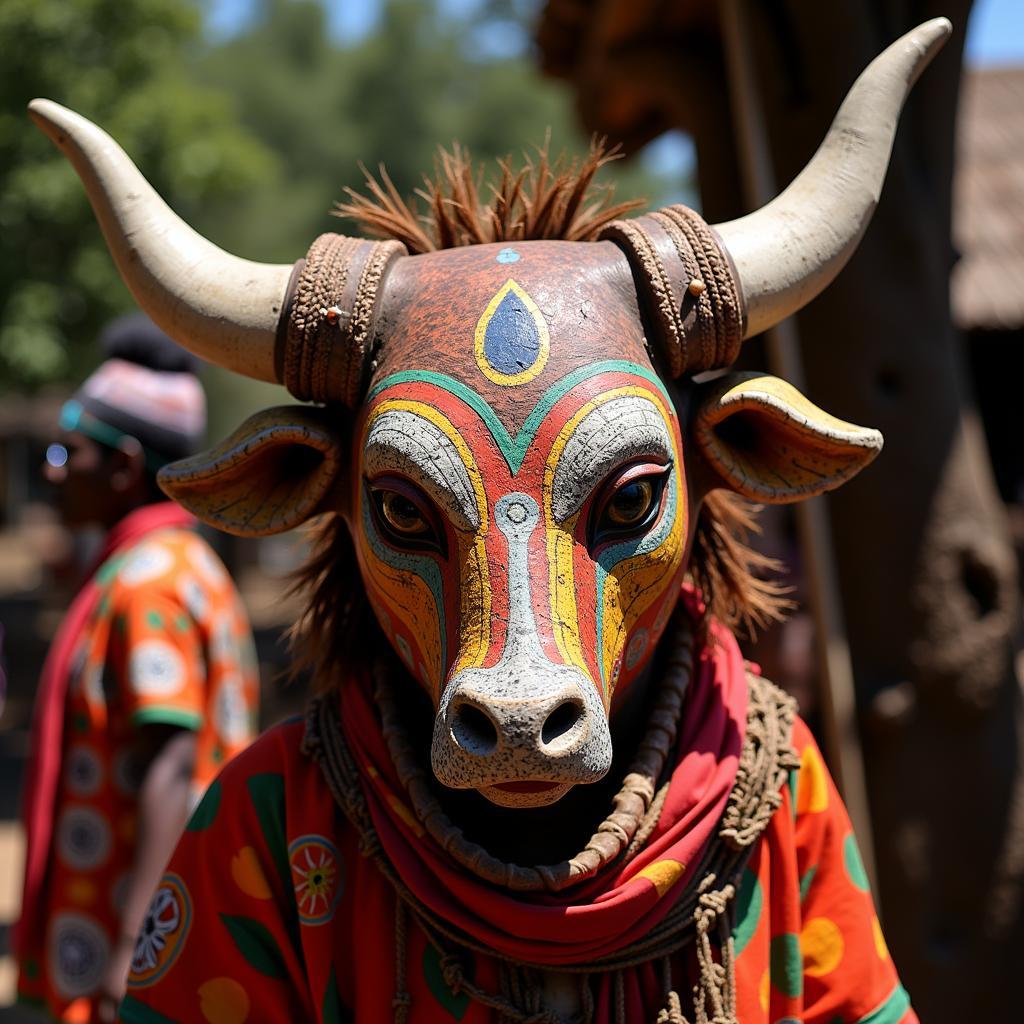Uncovering the Significance of African Bull Head References
The African bull head, a powerful symbol deeply woven into the tapestry of the continent’s diverse cultures, holds multifaceted meanings and interpretations. From ancient rock art to contemporary practices, references to the bull, often depicted through its striking head, resonate through various aspects of African Life, encompassing spirituality, social structures, and artistic expression. This exploration delves into the captivating world of African Bull Head References, shedding light on their historical context, cultural significance, and enduring presence across the continent.
 Ancient African rock art depicting bull heads
Ancient African rock art depicting bull heads
The Bull as a Spiritual Entity
Across numerous African cultures, the bull holds a revered position within spiritual beliefs and practices. Its imposing physicality, raw strength, and association with fertility have led to its elevation as a sacred animal, embodying divine power and serving as a conduit between the earthly and spiritual realms.
In ancient Egypt, for example, the bull was revered as a symbol of power, virility, and regeneration. The god Apis, depicted as a bull, was worshipped as a manifestation of the creator god Ptah and associated with fertility and abundance. Similarly, in West African Yoruba cosmology, the bull represents strength, courage, and protection. Shango, the Yoruba god of thunder and lightning, is often depicted with a double-headed axe, symbolizing the bull’s horns, further highlighting the animal’s spiritual significance.
 African tribal mask depicting a bull head used in a traditional ceremony
African tribal mask depicting a bull head used in a traditional ceremony
These beliefs extend beyond ancient civilizations and are deeply ingrained in contemporary African societies. Among the Maasai of East Africa, the bull plays a central role in rituals and ceremonies. Bull sacrifices are performed to appease the gods, seek blessings, and ensure the well-being of the community. The horns of sacrificed bulls are often preserved and displayed as sacred objects, signifying prosperity and protection.
Social Structures and Symbolism
The symbolism of the bull head extends beyond the realm of spirituality and permeates various aspects of African social structures. The bull’s strength and power are often associated with leadership, masculinity, and social standing.
In many patriarchal societies across Africa, the bull represents the ideal masculine qualities of courage, strength, and dominance. Leaders, warriors, and influential figures are often compared to bulls, highlighting their power and authority. For instance, the Zulu term “Inkosi,” meaning “king” or “chief,” is also used to refer to a bull, signifying the overlapping attributes of leadership and physical prowess.
Beyond leadership, the bull’s association with fertility and abundance plays a significant role in social customs and traditions. In many African cultures, cattle, particularly bulls, are seen as a symbol of wealth and prosperity. Large herds of cattle are often indicative of social standing and economic well-being.
Artistic Expressions and Cultural Identity
The evocative imagery of the bull head has captivated African artists for centuries, inspiring a myriad of artistic expressions that reflect the animal’s profound cultural significance. From ancient rock paintings to contemporary sculptures, the bull head serves as a recurring motif, embodying cultural identity and artistic ingenuity.
The intricate beadwork of the Zulu people often features stylized bull heads, symbolizing strength, courage, and protection. Similarly, the wooden masks of the Dogon people of Mali frequently incorporate bull head motifs, representing the animal’s spiritual power and its association with fertility and abundance.
These artistic representations, passed down through generations, serve as tangible links to ancestral knowledge and cultural heritage. They offer a glimpse into the rich tapestry of beliefs, values, and artistic traditions that continue to shape African identities today.
Conclusion
The enduring presence of African bull head references, spanning millennia and permeating various aspects of the continent’s cultures, testifies to the animal’s profound significance. From its spiritual embodiment of divine power to its representation of leadership and social standing, the bull head remains a potent symbol, deeply ingrained in the artistic, social, and spiritual fabric of Africa.

